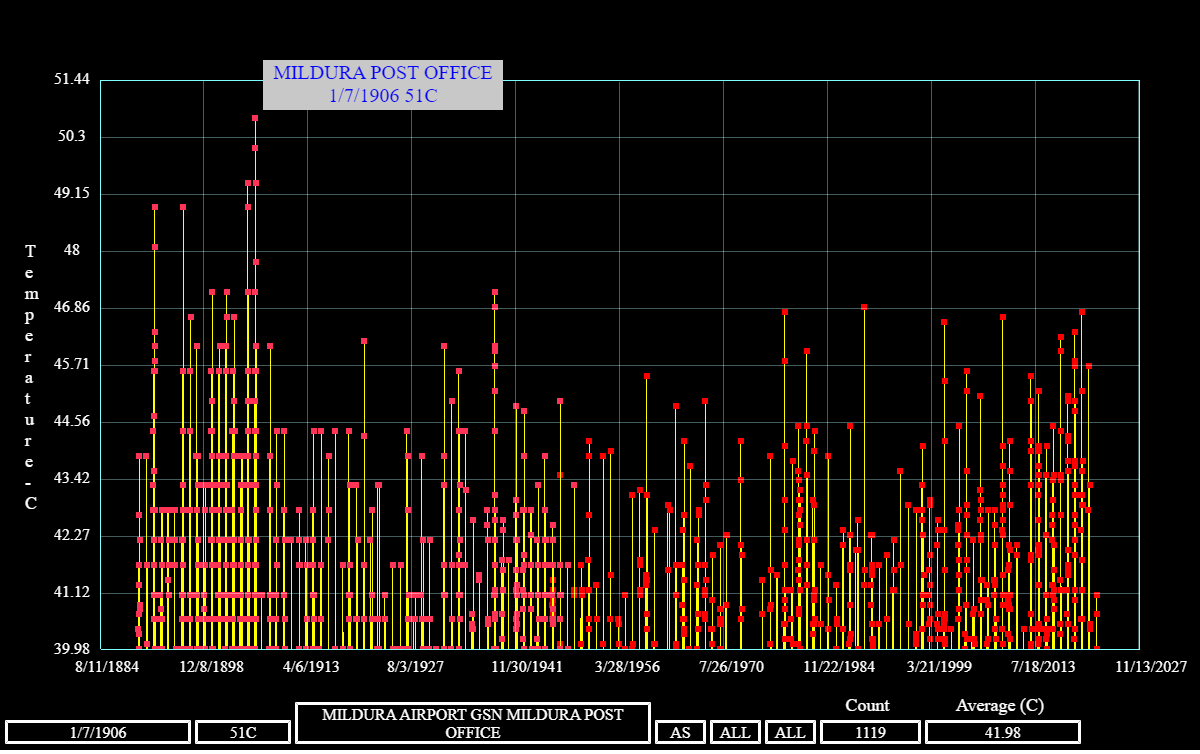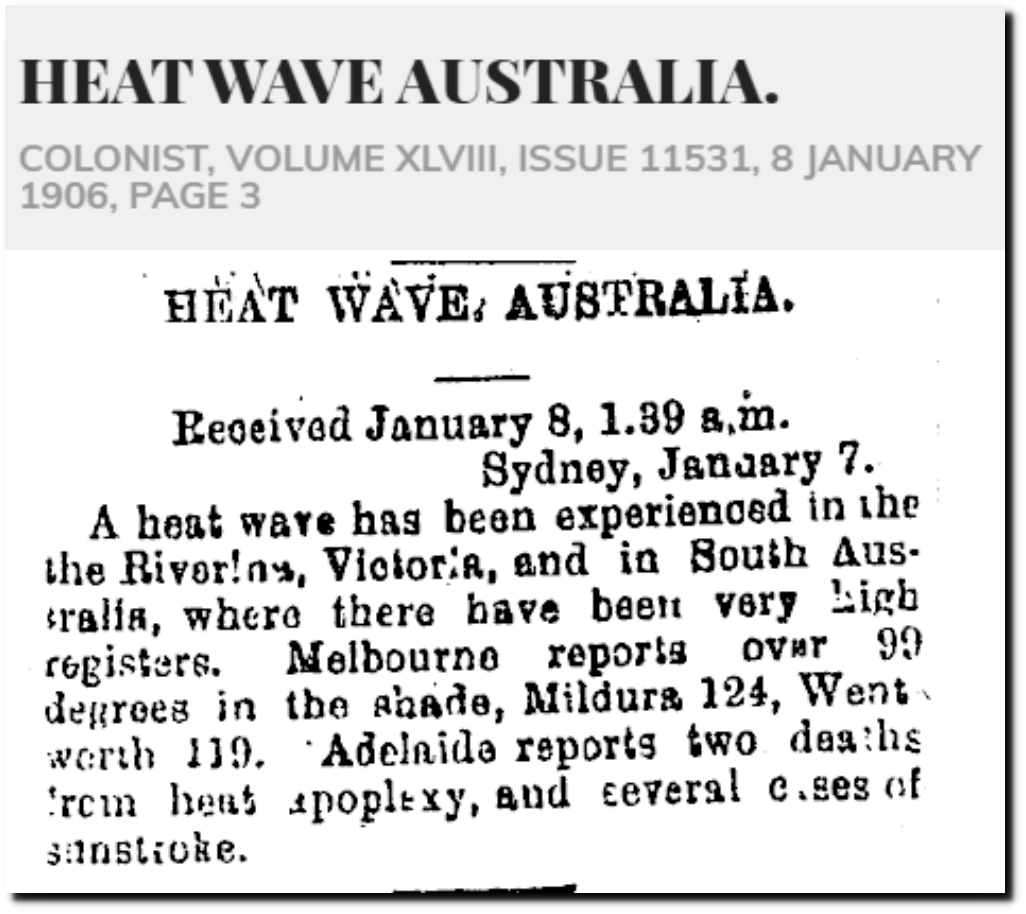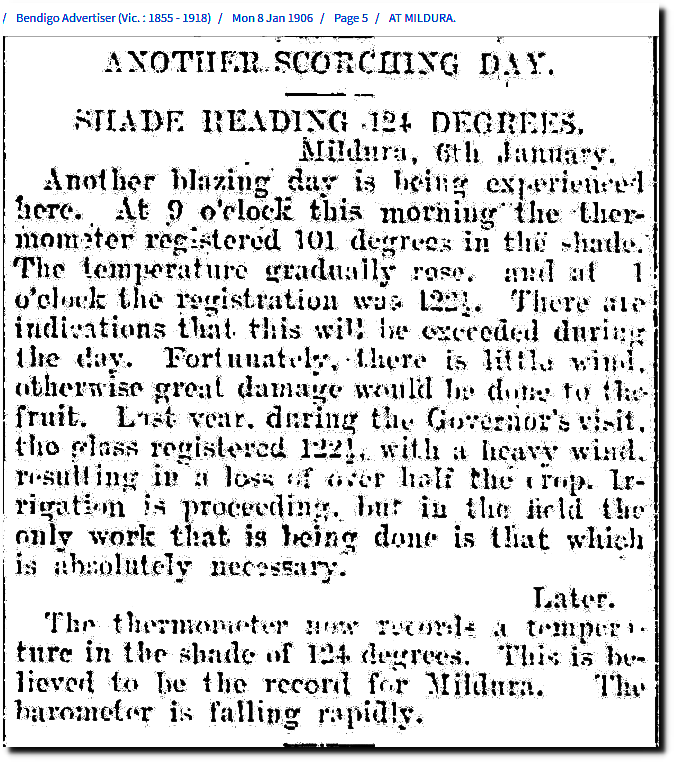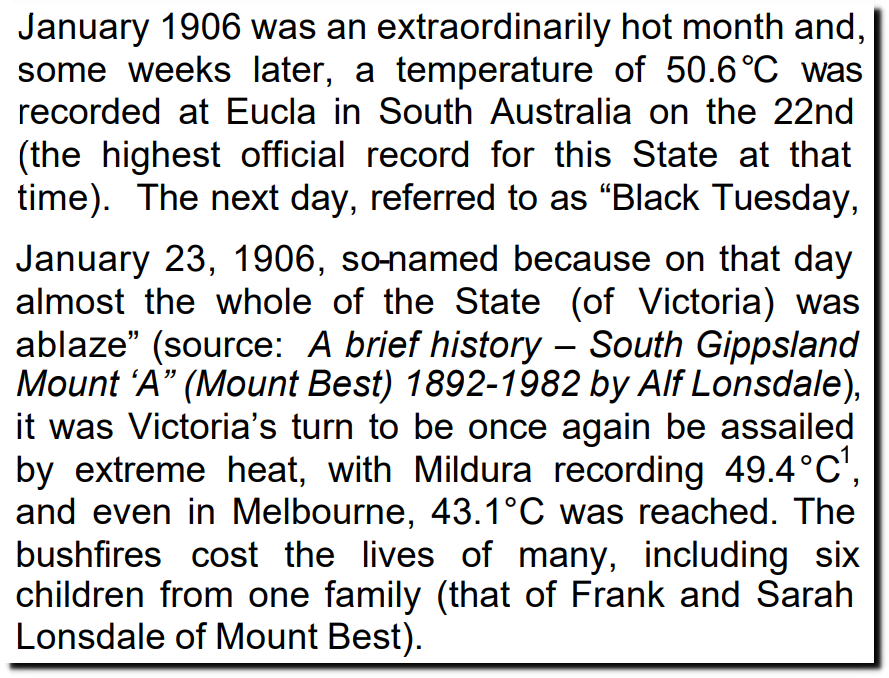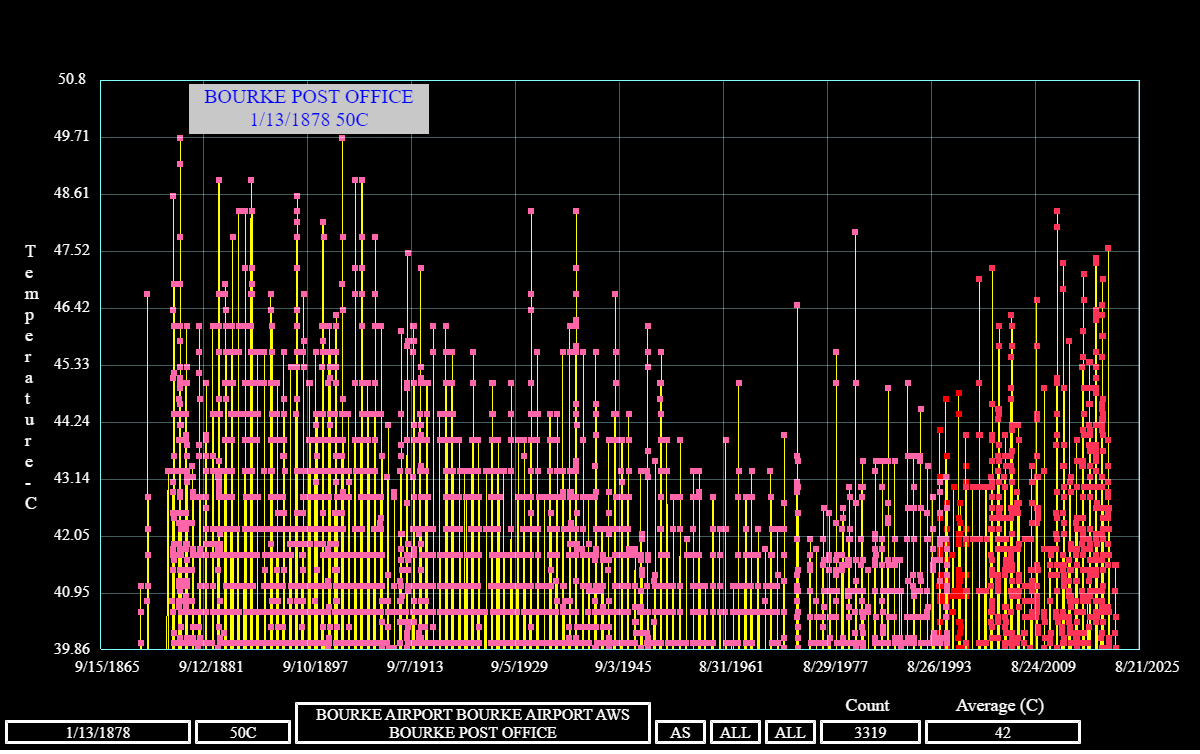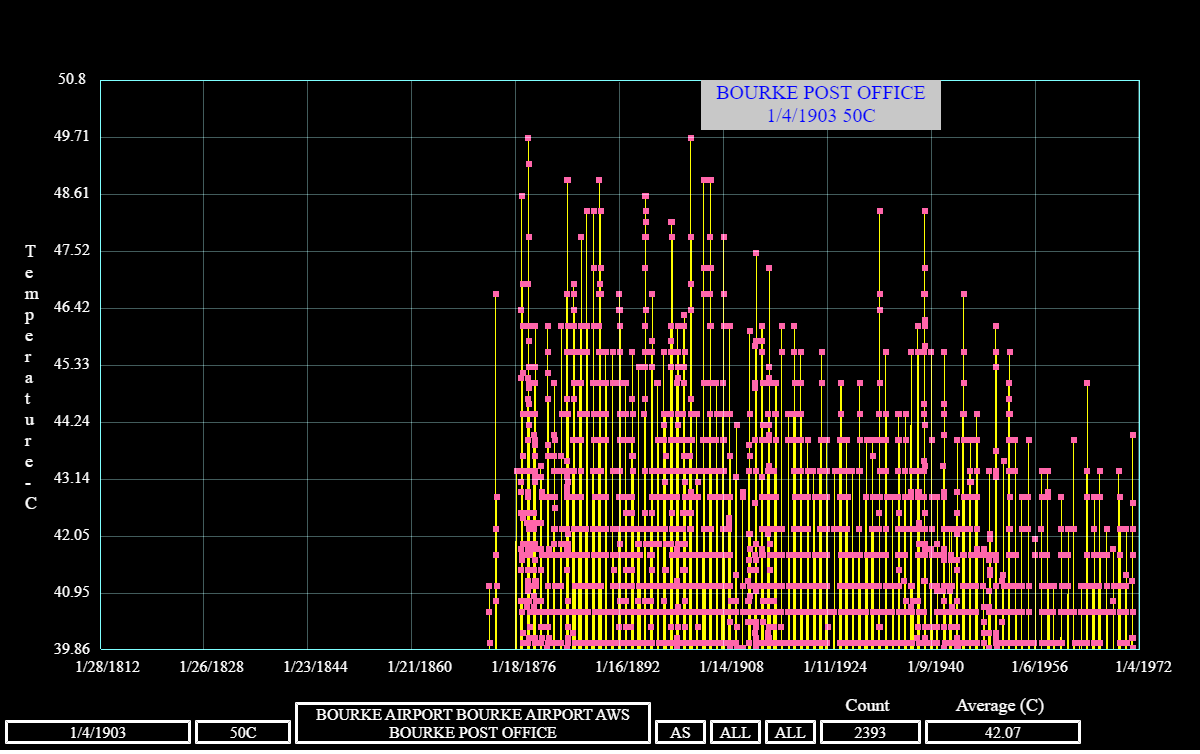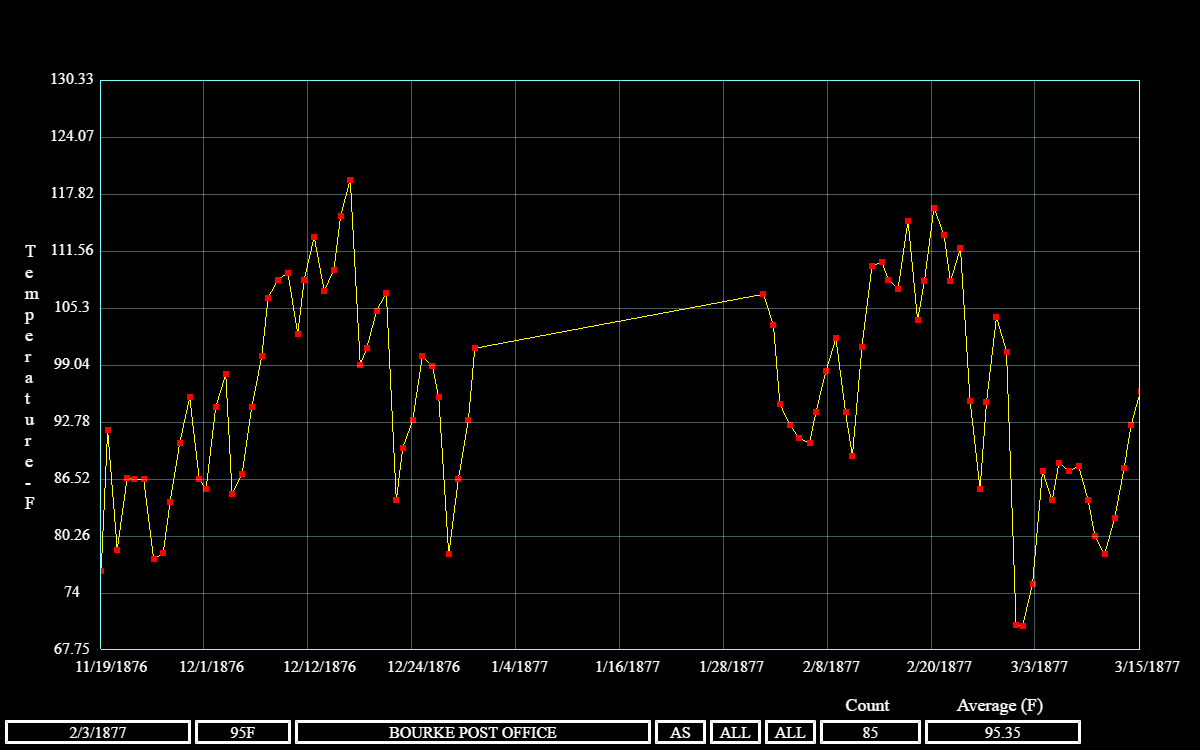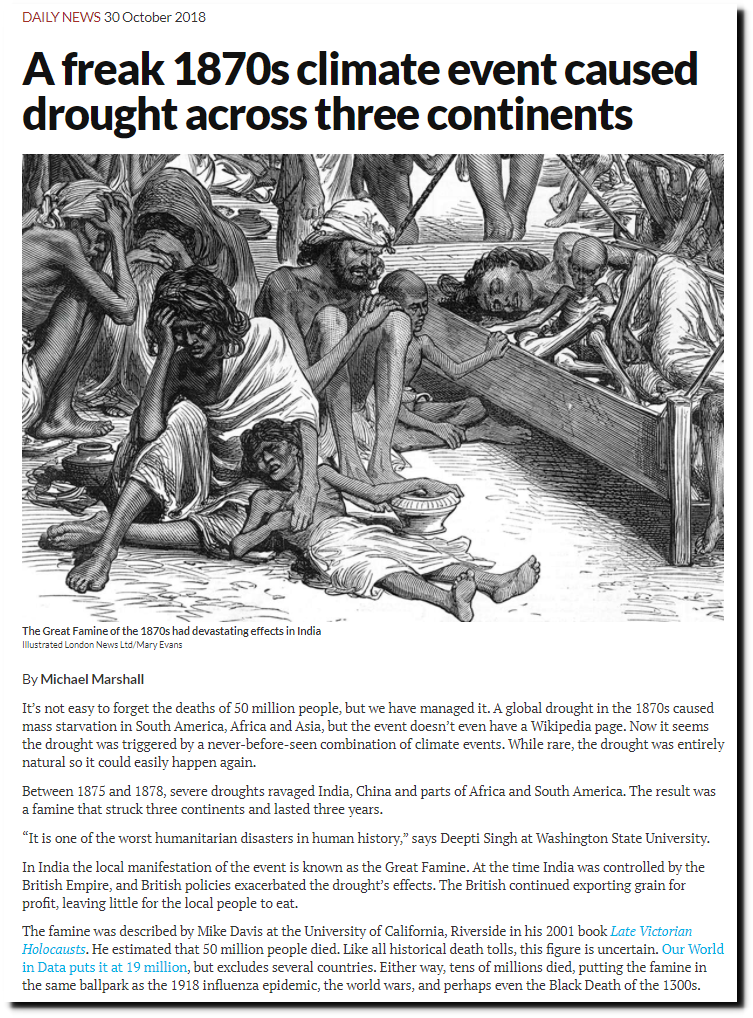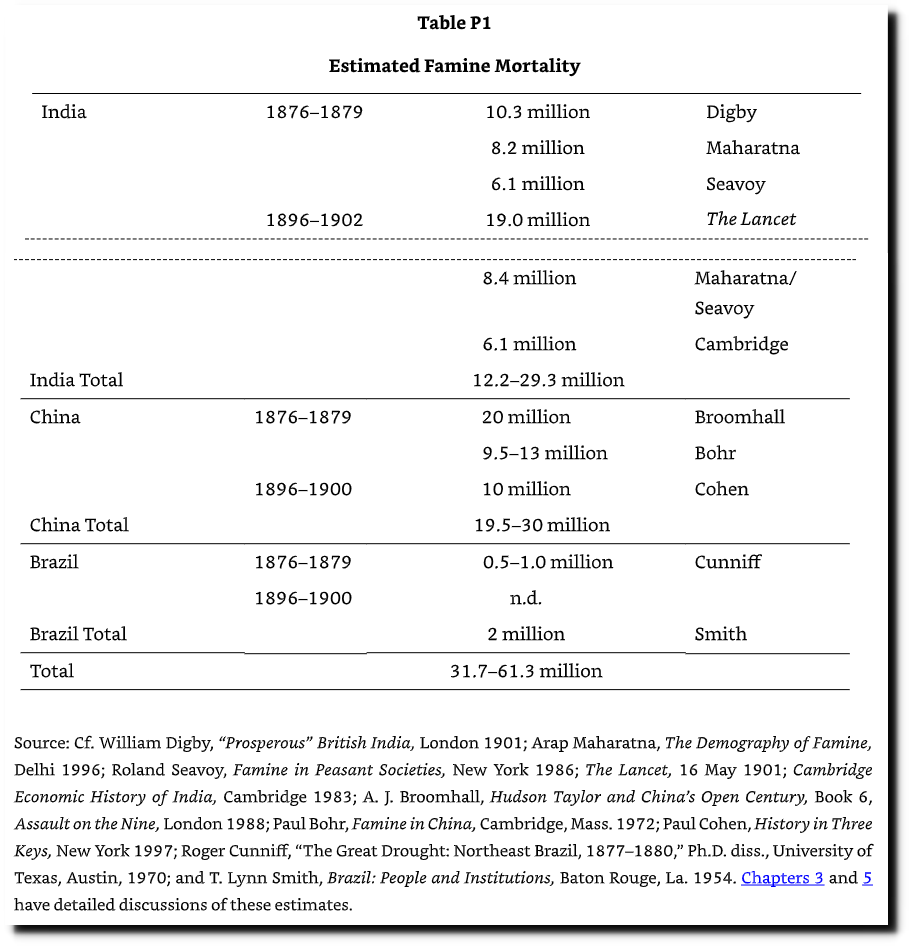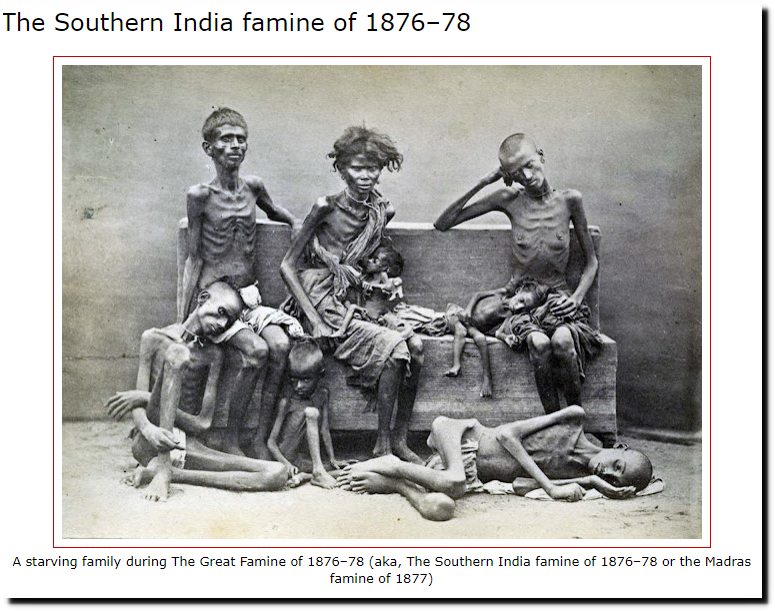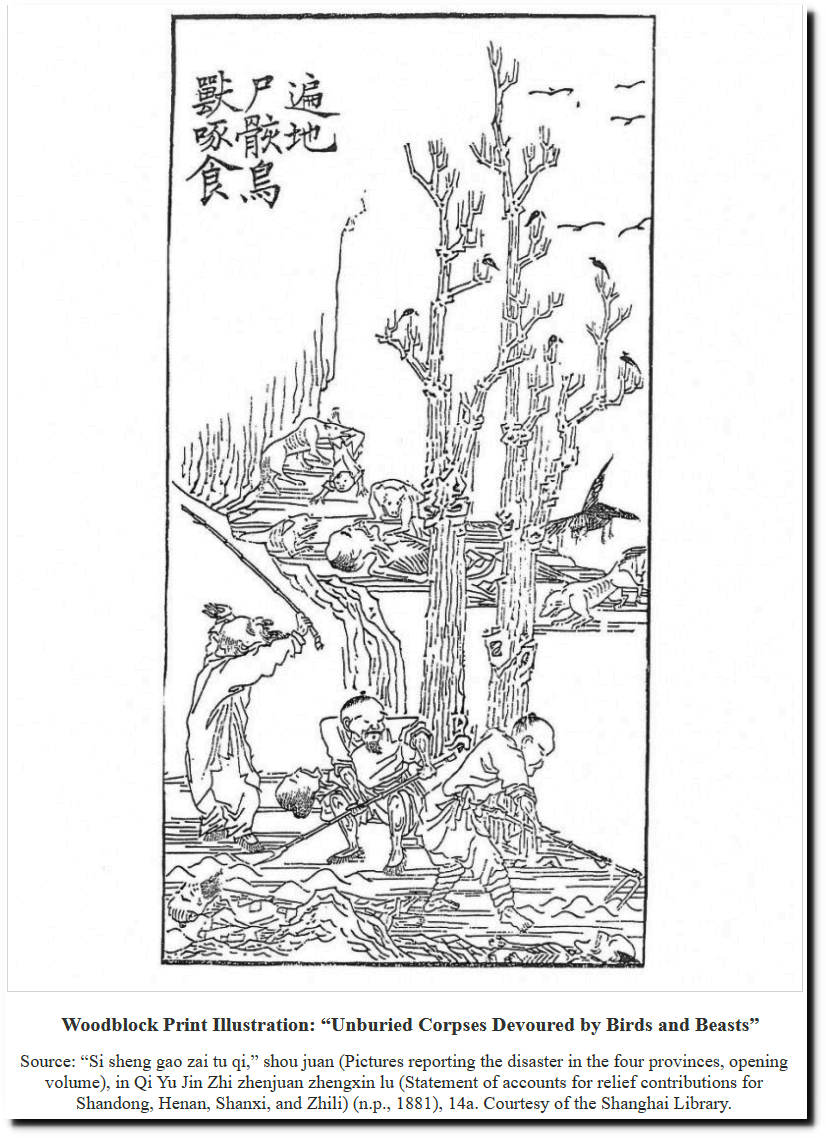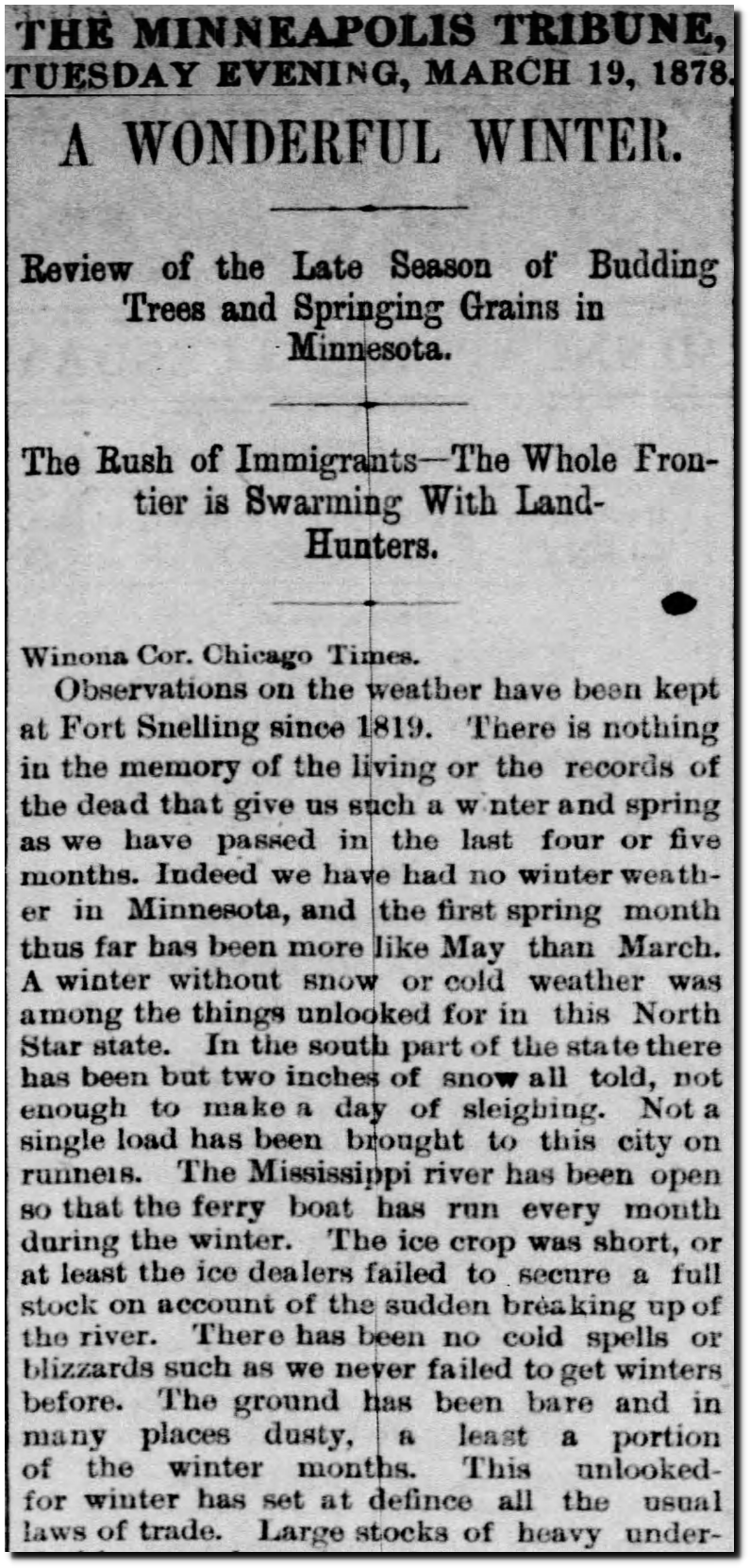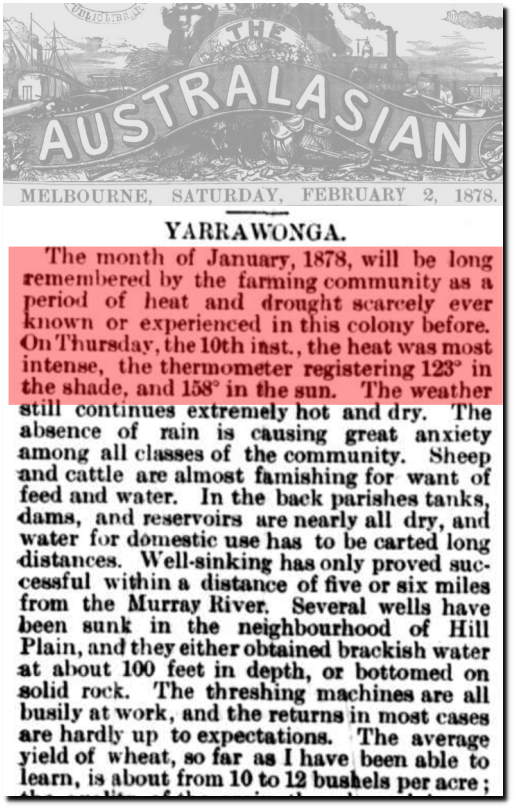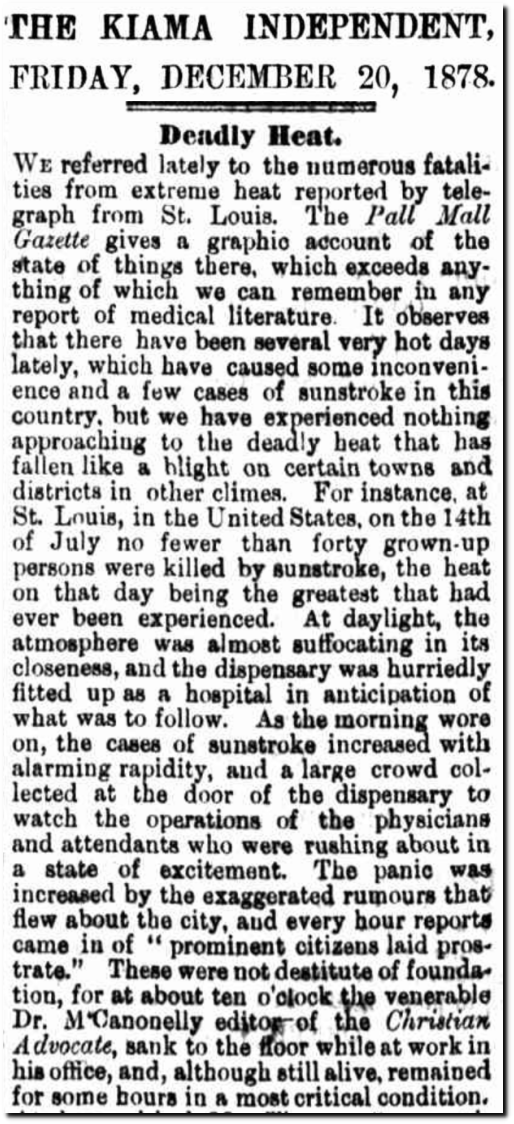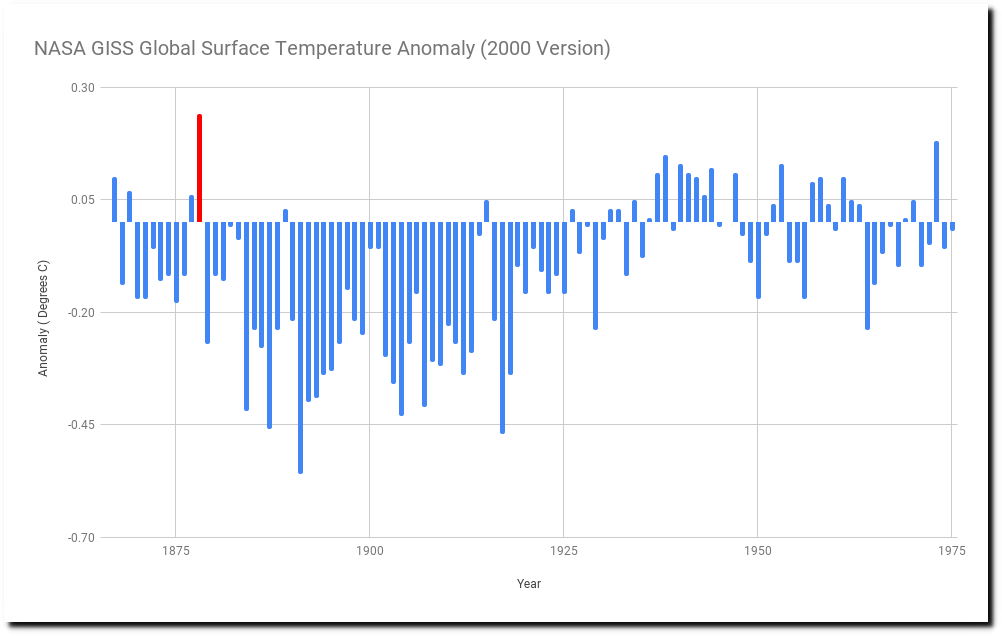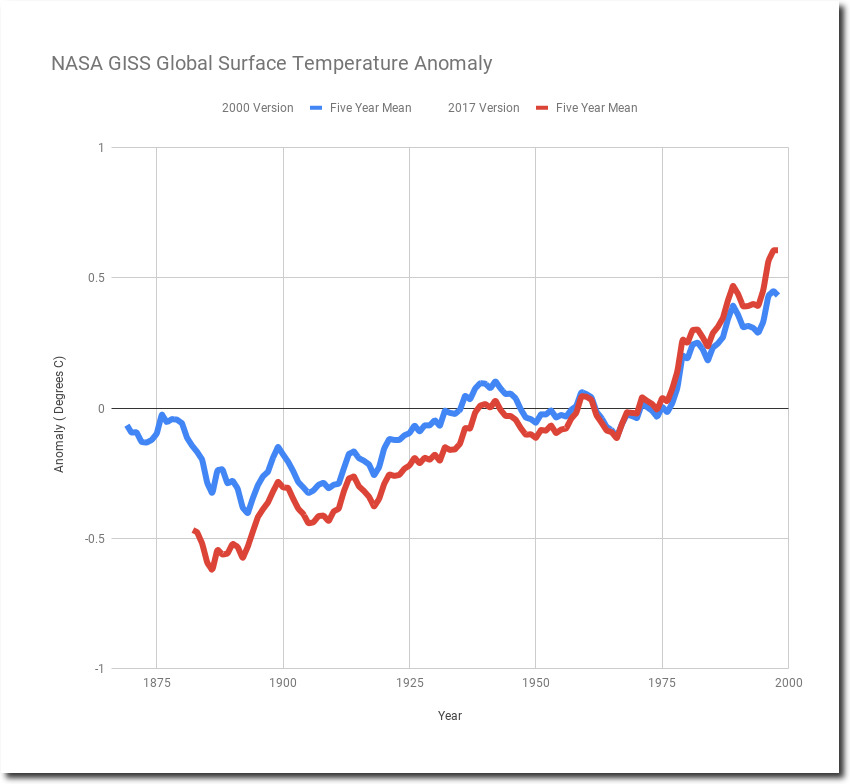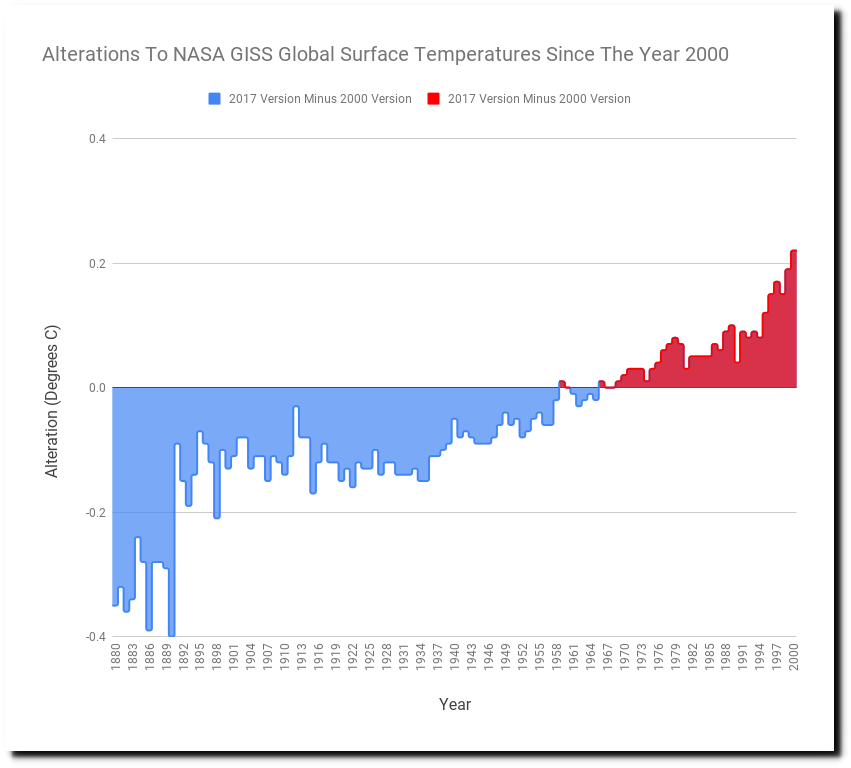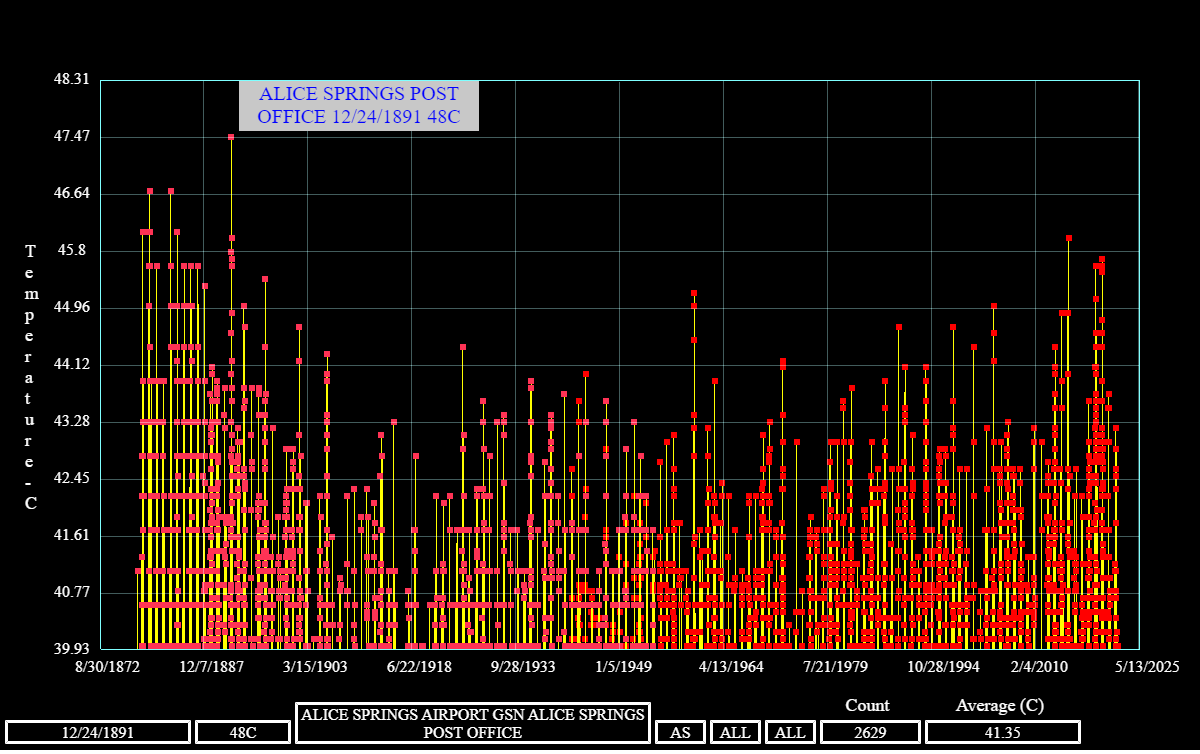In 1995, the Australian Bureau of Meteorology showed these temperature records:
New South Wales Bourke 52.8C January 17, 1877
Victoria Mildura 50.8C January 1, 1906
Queensland Cloncurry 53.1C January 16, 1889
Western Australia Eucla 50.7C January 22, 1906
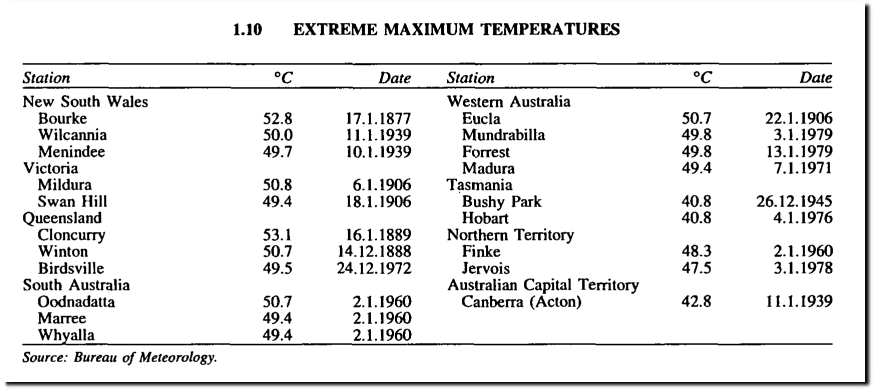
All of those records have since been erased by the Bureau of Meteorology, as have all temperatures prior to 1910.
Rainfall and Temperature Extremes
Climate change and variability: Tracker: Australian timeseries graphs
The temperature record at Mildura is visible in the NOAA GHCN daily temperature database. All of the hottest weather there occurred before 1910.
On January 6, 1906 Mildura, Victoria reached 124F (51.1C) and on January 5 reached 123F – one year after reaching 122,5F.
08 Jan 1906 – THE HEAT WAVE – Trove
Papers Past | Newspapers | Colonist | 8 January 1906 | HEAT WAVE AUSTRALIA.
08 Jan 1906 – AT MILDURA. – Trove
06 Jan 1906 – THE HEAT WAVE. – Trove
On January 5, 1906 Mildura, Victoria reached 123F.
06 Jan 1906 – MILDURA FRUIT SEASON – Trove
https://ams.confex.com/ams/pdfpapers/155748.pdf
Over the past 150 years, Bourke has had 3,319 days over 40C, of which 2,393 occurred more than fifty years ago.
Unfortunately though, all of the data from January 1877 is missing so I can’t see the 52.8C record on January 17, 1877.
That occurred during a record El Nino and AMO which led to the deaths of tens of millions of people.
A freak 1870s climate event caused drought across three continents | New Scientist
SNAFU!: The Southern India famine of 1876–78
North China famine, 1876-79 | DisasterHistory.org
19 Mar 1878, Page 2 – Star Tribune at Newspapers.com
02 Feb 1878 – YARRAWONGA. – Trove
20 Dec 1878 – Deadly Heat. – Trove
In the 2000 version of NASA global temperatures they showed 1878 as the warmest year prior to 1980, but then they altered the data to make the prior warmth disappear.
Alice Springs also had their hottest weather prior to the year 1910.



